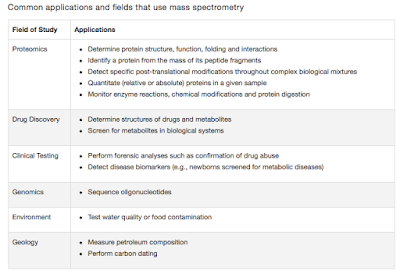Global Antibiotic Resistance Alert: MCR-1 in Plasmid
Greetings
Antibiotic resistance is a topic of great interest and perhaps one of the most talked about topic in this blog. One of the most talked about resistance in last couple of years was the resistance to carbapenem class of drugs. It then became a massive issue with emergence of strains called as NDM (New Delhi Metallo Beta Lactamase). The use of this name is still debated. Important point is we now live in an era of superbugs, and rapidly running out of options.
Gram negative bacteria, especially Enterobacteriaceae members are one of the most difficult to treat pathogens, since they are known to acquire resistance quickly especially through plasmid mediated transfer. When resistant to everything else colistin is considered as the last option. Colisitn (Polymixin E) was discovered in 1947 from Paenibacillus polymyxa. Chemically, Colistin is a mixture of cyclic polypeptides colistin A and B. However, it was rarely used due to its toxic properties. When medicine ran out of options, the drug was repurposed. But colistin resistance was not uncommon. Several bacteria have innate resistance to colistin. Some bacteria have recently developed resistance colistin resistance through target modification or an enzyme- Colistinase. Klebsiella pneumoniae strains resistant to colistin is a story of the past.
 |
| Fig 1: Structure of Colistin. Source |
The exact mechanism of colistin activity has not been described. It is proposed that Colistin being cationic in nature binds well to the polyanionic bacterial LPS and acts through a detergent-like effect, via a two-step mechanism. Colistin activity is not dependent on the metabolic activity of the bacteria, thus making it a great antibiotic. It is argued this property also makes it difficult for the bacteria to acquire resistance. Interestingly, the genes coding for resistance was described only in the chromosome and hence resistance transfer was considered minimal possibility. But colistin resistance has been increasingly reported though the prevalence varies from region to region.
 The latest reported published in Lancet infectious disease has once again brought this topic into headlines. In a routine resistance survey, the team noted that MCR-1 was present in an E coli (strain SHP45) plasmid. The paper reports that the MCR-1 gene was present in E coli isolates collected from 78 (15%) of 523 samples of raw meat and 166 (21%) of 804 animals during 2011–14, and 16 (1%) of 1322 samples from inpatients with infection. Further mechanistic studies showed that this gene codes for phosphoethanolamine transferase enzyme, leading to addition of phosphoethanolamine to lipid A, thus changing colistin target. The studies indicate that this is a jump from animal, since use of colistin is so common in animal farming in China
The latest reported published in Lancet infectious disease has once again brought this topic into headlines. In a routine resistance survey, the team noted that MCR-1 was present in an E coli (strain SHP45) plasmid. The paper reports that the MCR-1 gene was present in E coli isolates collected from 78 (15%) of 523 samples of raw meat and 166 (21%) of 804 animals during 2011–14, and 16 (1%) of 1322 samples from inpatients with infection. Further mechanistic studies showed that this gene codes for phosphoethanolamine transferase enzyme, leading to addition of phosphoethanolamine to lipid A, thus changing colistin target. The studies indicate that this is a jump from animal, since use of colistin is so common in animal farming in China
Co-author Jian-Hua Liu expressed the findings as worrying "The last class of antibiotics in which resistance was incapable of spreading from cell to cell." Another researcher Timothy Walsh comments, "If MRC-1 becomes global, which is a case of when not if, and the gene aligns itself with other antibiotic resistance genes, which is inevitable, then we will have very likely reached the start of the post-antibiotic era. We must all reiterate these appeals and take them to the highest levels of government or face increasing numbers of patients for whom we will need to say, 'Sorry, there is nothing I can do to cure your infection." A yet another co author Jianzhong Shen says, "Because of the relatively low proportion of positive samples taken from humans compared with animals, it is likely that mcr-1 mediated colistin resistance originated in animals and subsequently spread to humans"
Currently, a lot of scientists are recommending global surveillance and stop polymixin use in animals. Certain scientists also raised hope by pointing to earlier emergence of Plasmid mediated Vancomycin resistant S aureus which didn't globalize. Patel from CDC comments, “That’s our classic example where we were very, very concerned and then it didn’t spread”. But its well acknoweledged by everyone that desperate multi level control of antibiotic and surveillance will help in limiting the spread.
Bialvaei AZ, & Samadi Kafil H (2015). Colistin, mechanisms and prevalence of resistance. Current medical research and opinion, 31 (4), 707-21 PMID: 25697677
Liu, Y., Wang, Y., Walsh, T., Yi, L., Zhang, R., Spencer, J., Doi, Y., Tian, G., Dong, B., Huang, X., Yu, L., Gu, D., Ren, H., Chen, X., Lv, L., He, D., Zhou, H., Liang, Z., Liu, J., & Shen, J. (2015). Emergence of plasmid-mediated colistin resistance mechanism MCR-1 in animals and human beings in China: a microbiological and molecular biological study The Lancet Infectious Diseases DOI: 10.1016/S1473-3099(15)00424-7





Comments
Post a Comment